
Roots
Consider, for a moment, the quiet hum of history residing within each strand of hair. It is not merely protein and pigment, but a living archive, holding whispers of ancestral customs and the enduring spirit of generations past. For those with textured hair, this connection runs particularly deep, a profound inheritance passed down through lineage, shaping not only how hair is cared for but also how identity is understood and expressed in the present moment. This foundational understanding allows us to truly appreciate the profound legacy held within our coils, curls, and waves.

Hair Anatomy and Its Textured Expressions
The unique characteristics of textured hair begin at its very genesis ❉ the follicle. Unlike straight hair, which typically emerges from a round follicle, curly and coily strands often arise from an oval or even ribbon-like follicle shape. This anatomical distinction dictates the helical growth pattern, creating the beautiful variations we observe.
The cuticle, the outermost layer of the hair shaft, tends to be more open or lifted in textured hair, which, while allowing for magnificent volume and elasticity, also renders it more susceptible to moisture loss and environmental influences. Understanding these intrinsic structural differences forms the bedrock of effective care.
Each hair strand, particularly those with texture, holds an intricate blueprint shaped by its follicle, influencing its helical growth and moisture retention.
The internal architecture of the hair shaft, the cortex, also varies. In textured hair, the distribution of keratin proteins within the cortex can be uneven, contributing to its strength and resilience but also to its propensity for tangling and knotting. This structural complexity means that care routines cannot be one-size-fits-all; they must acknowledge and respect the hair’s inherent design. The medulla, the innermost core, may be discontinuous or absent in finer textured strands, further influencing their behavior and needs.
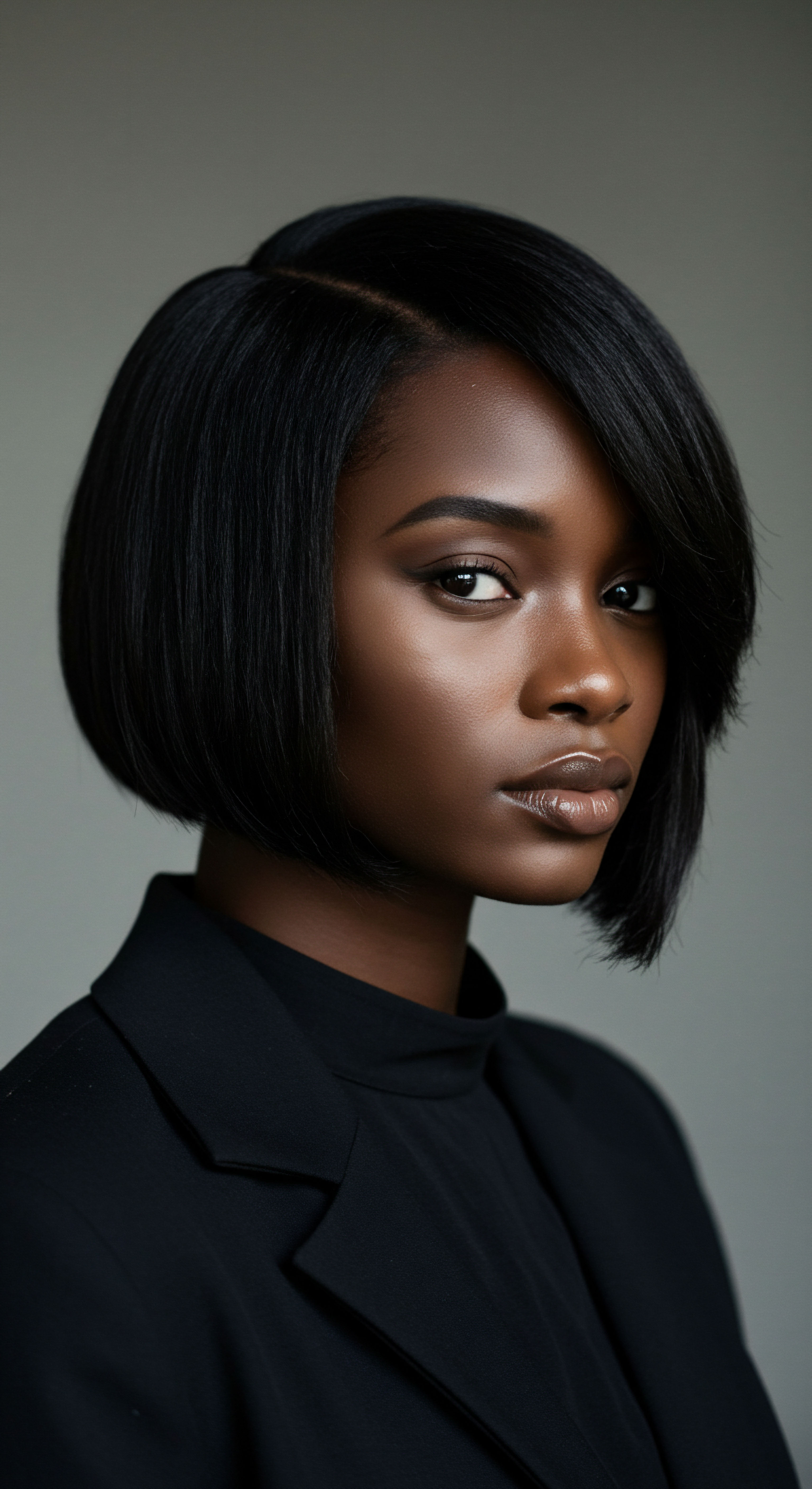
Understanding Hair Classifications
The myriad expressions of textured hair have prompted various classification systems, serving as helpful guides, though never as rigid definitions. The most widely recognized system categorizes hair into types 1 (straight), 2 (wavy), 3 (curly), and 4 (coily), with further sub-classifications (A, B, C) based on the tightness of the curl pattern.
- Type 2 Hair ❉ Displays a gentle ‘S’ wave, ranging from loose beach waves to more defined patterns.
- Type 3 Hair ❉ Showcases distinct curls, from loose spirals to tight corkscrews, with noticeable bounce.
- Type 4 Hair ❉ Encompasses tightly coiled strands, from fine, delicate coils to densely packed zig-zag patterns, often with significant shrinkage.
While these classifications offer a common language for discussing hair types, it is paramount to remember that an individual’s hair often exhibits a blend of these patterns, even on a single head. This variability underscores the personal nature of hair care, moving beyond broad labels to an intimate acquaintance with one’s own unique texture.
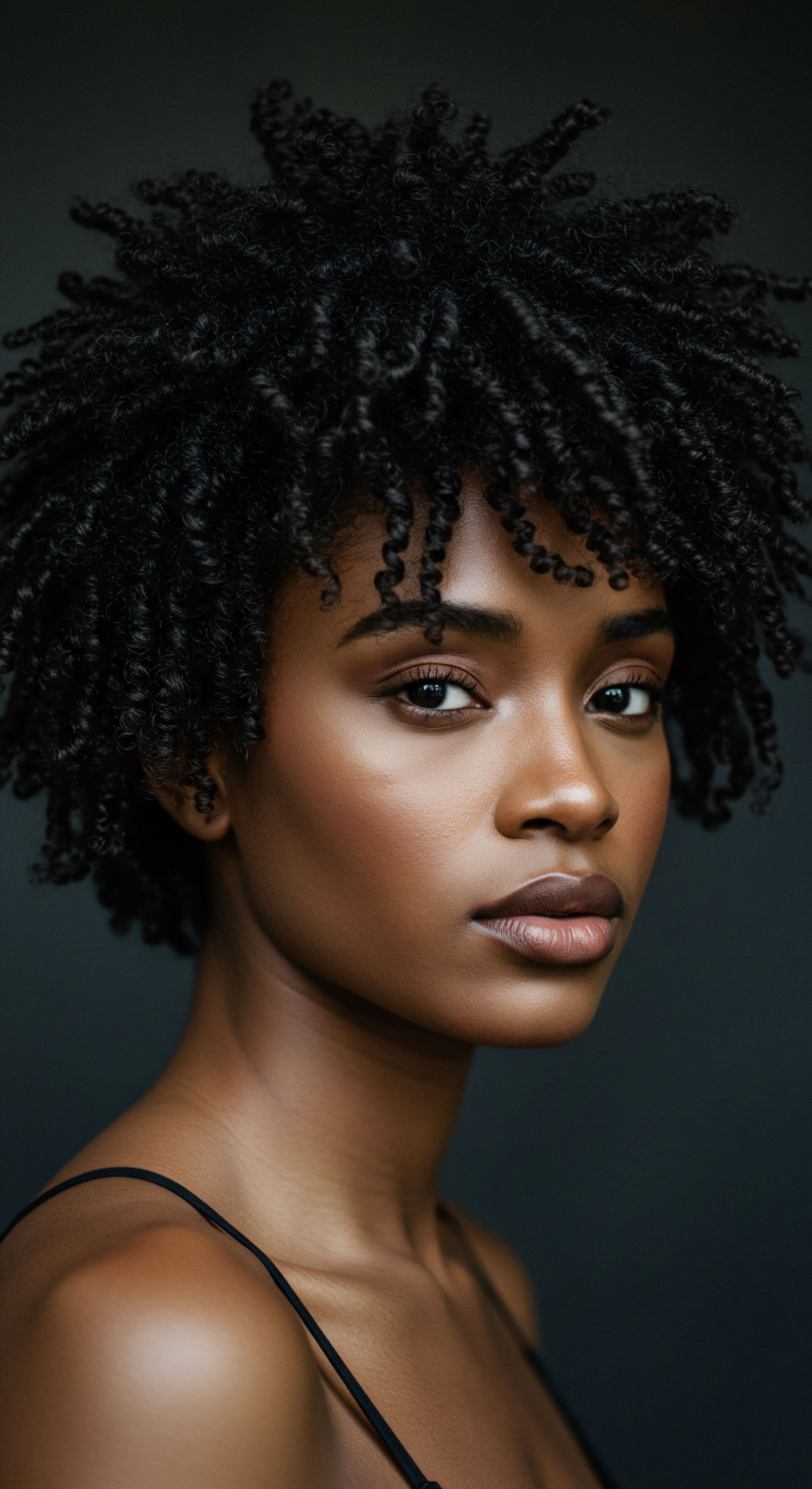
The Language of Textured Hair
A specific lexicon has grown around textured hair, born from a collective desire to describe its unique attributes and care practices. Terms like Porosity, referring to the hair’s ability to absorb and retain moisture, or Elasticity, its capacity to stretch and return without breaking, are fundamental. Understanding these terms empowers individuals to select appropriate products and techniques. Other terms, such as Shrinkage, which describes the apparent shortening of textured hair as it dries, or Protective Styles, designed to shield strands from environmental damage, speak to the distinct experiences of those with coils and curls.
This shared vocabulary not only aids in practical care but also fosters a sense of community and shared understanding. It allows for conversations that move beyond superficial appearance to a deeper appreciation of hair health and heritage.
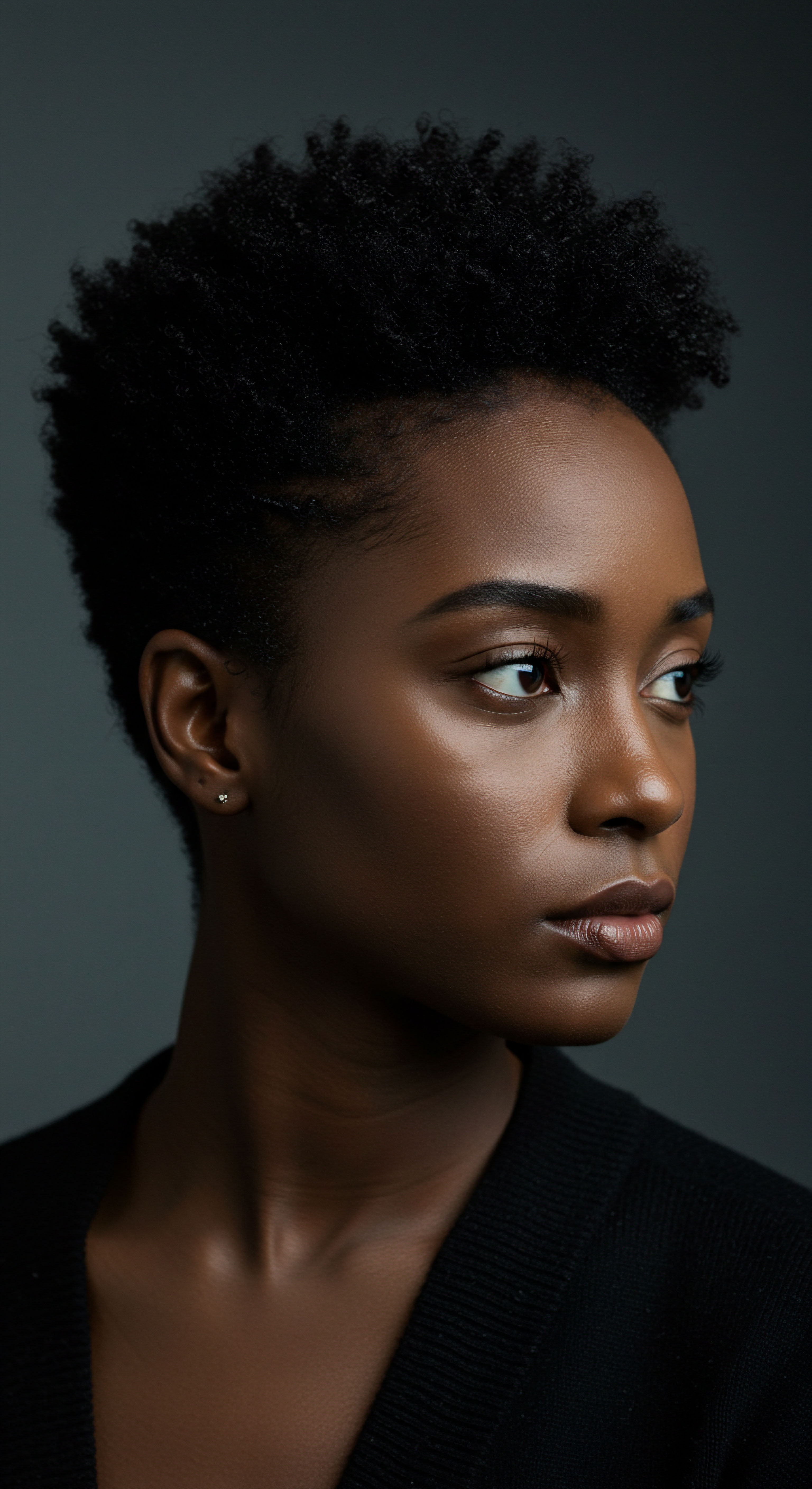
How Do Growth Cycles Influence Hair Health?
Hair growth occurs in distinct phases, a cycle that significantly impacts the overall health and length retention of textured hair.
- Anagen Phase ❉ The active growth period, which can last for several years. For textured hair, this phase can sometimes be shorter than for straight hair, influencing maximum length potential.
- Catagen Phase ❉ A transitional phase where growth ceases, lasting a few weeks. The hair follicle shrinks during this time.
- Telogen Phase ❉ The resting phase, typically lasting a few months, after which the hair sheds and a new anagen phase begins.
Factors such as genetics, nutrition, stress, and overall health can influence the duration of these cycles. For textured hair, managing practices that minimize breakage during the anagen phase becomes paramount for achieving desired length and vitality. The delicate nature of its structure means that even small amounts of damage can significantly impede visible growth.

Ritual
As we step from the foundational understanding of hair’s very make-up, a new vista unfolds ❉ the practical wisdom embedded in daily and periodic practices. Here, the query of historical hair care meeting contemporary identity truly takes on a tangible form, for it is in the conscious, repeated actions—the rituals—that heritage is honored and personal expression finds its voice. This section offers a gentle guide through the art and science of textured hair styling, acknowledging the profound connection between method and meaning.

Protective Styling Encyclopedia
Protective styles stand as a cornerstone of textured hair care, shielding delicate strands from environmental stressors and manipulation. These styles, many with roots in ancient traditions, allow hair to rest and grow, minimizing breakage and promoting length retention.
From intricate cornrows, a style with historical lineage stretching back millennia across African cultures, to elegant braids and twists, these techniques serve both aesthetic and functional purposes. Modern interpretations of these historical styles often incorporate extensions, offering versatility and additional protection. The careful sectioning, gentle tension, and thoughtful product application inherent in creating these styles speak to a mindful engagement with one’s hair, a practice passed down through generations.
Protective styles, deeply rooted in ancient traditions, serve as a vital link between historical hair practices and contemporary hair health, offering both aesthetic appeal and crucial protection.

Natural Styling and Definition Techniques
Celebrating the hair’s innate texture through natural styling techniques allows for a profound connection to one’s authentic self. Methods like the Wash and Go, where hair is cleansed, conditioned, and then allowed to dry in its natural curl pattern with the aid of curl-defining products, have become a contemporary staple. Similarly, twist-outs and braid-outs involve setting damp hair in twists or braids, allowing it to dry, and then carefully unraveling for elongated, defined curls.
These techniques, while seemingly modern, echo historical practices of shaping and setting hair using natural elements and simple tools. The satisfaction derived from seeing one’s natural texture beautifully defined extends beyond mere appearance; it fosters a sense of self-acceptance and pride.

Wigs and Hair Extensions Mastery
The use of wigs and hair extensions, while often viewed through a contemporary lens of fashion and versatility, possesses a rich historical context. In many cultures, wigs were symbols of status, protection, or spiritual significance. Today, they offer individuals with textured hair boundless opportunities for expression, allowing for temporary changes in length, color, and style without altering their natural hair.
Mastering the application and care of wigs and extensions involves understanding proper braiding patterns for securing the base, selecting appropriate hair types that blend seamlessly, and maintaining both the extensions and the natural hair beneath. This mastery transforms these accessories from mere adornments into tools for self-discovery and creative freedom.

Heat Styling with Gentle Approaches
While natural texture is celebrated, heat styling offers another avenue for versatility. Straightening, curling, or waving textured hair with heat tools requires a gentle approach to preserve hair health. This involves using heat protectants, opting for lower temperatures, and minimizing frequency.
The allure of straightened hair, historically tied to Western beauty standards, continues to influence some contemporary choices. However, the modern discourse emphasizes a balanced approach, prioritizing hair integrity above all. This involves a thoughtful consideration of the hair’s tolerance for heat and a commitment to restorative care afterwards.
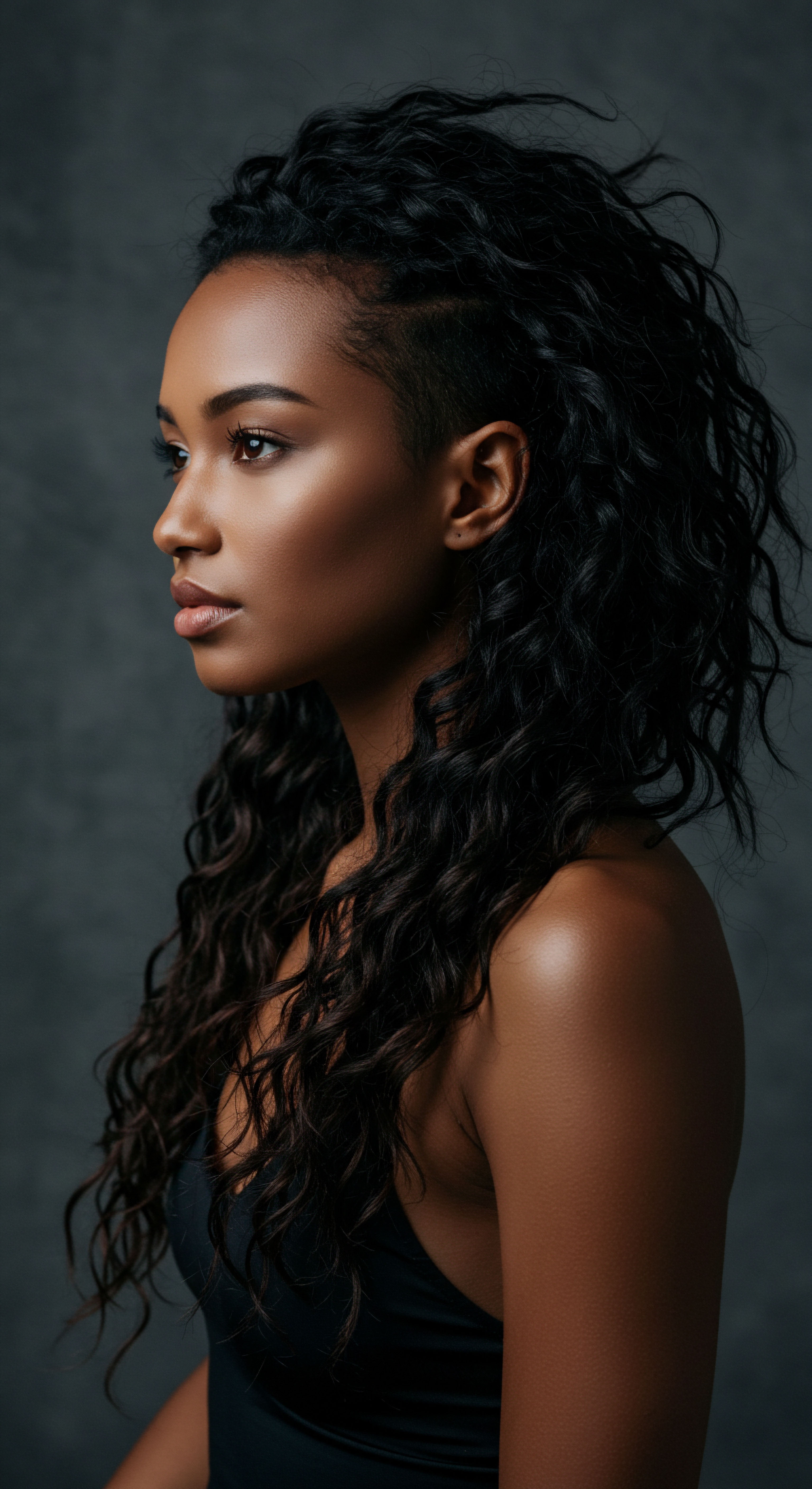
What Is the Complete Textured Hair Toolkit?
A thoughtfully assembled toolkit is indispensable for effective textured hair care. The selection of tools directly influences the health and appearance of coils and curls.
| Tool Category Cleansing and Conditioning |
| Specific Items Sulfate-free shampoos, deep conditioners, leave-in conditioners |
| Purpose and Benefit Preserves natural moisture, provides deep hydration, detangles. |
| Tool Category Detangling and Styling |
| Specific Items Wide-tooth combs, detangling brushes, satin scrunchies |
| Purpose and Benefit Minimizes breakage, reduces frizz, protects hair during styling. |
| Tool Category Protection and Preservation |
| Specific Items Satin or silk bonnets, pillowcases, head wraps |
| Purpose and Benefit Reduces friction, retains moisture, prevents tangles overnight. |
| Tool Category Product Application |
| Specific Items Applicator bottles, spray bottles, clips |
| Purpose and Benefit Ensures even distribution of products, aids in sectioning. |
| Tool Category Selecting tools that respect hair's delicate nature is paramount for long-term health. |
Each item in this toolkit plays a role in nurturing textured hair, reflecting a contemporary understanding of its unique needs, often informed by generations of practical wisdom. The evolution of these tools, from simple handmade implements to scientifically engineered brushes, mirrors the ongoing quest for optimal hair wellness.

Relay
Moving beyond the tangible rhythms of daily care, we now step into a space where the threads of history, science, and identity intertwine with breathtaking complexity. How, precisely, does the legacy of past hair practices resonate within the very fabric of contemporary self-perception? This is where the profound insights lie, where biological predispositions meet societal constructs, and personal choices echo collective histories. Our exploration here seeks to unearth these deeper connections, revealing how hair, far from being a mere aesthetic choice, stands as a potent marker of cultural belonging, resilience, and evolving personal narratives.
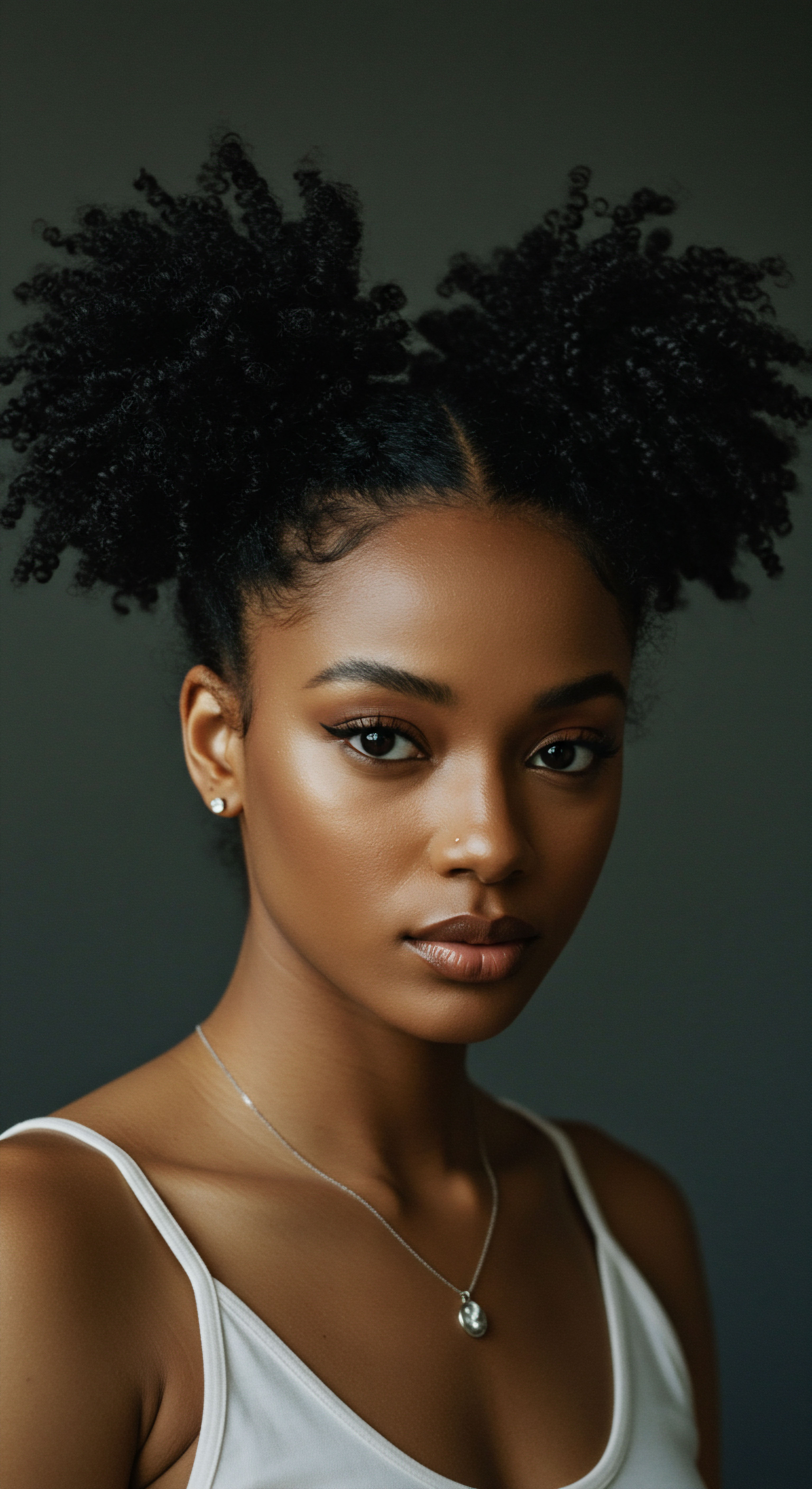
Building Personalized Textured Hair Regimens
The creation of a personalized textured hair regimen stands as a testament to contemporary understanding, yet it is deeply informed by historical observations. Early hair care, though lacking scientific terminology, often relied on intuitive understanding of natural ingredients and their effects on hair. Today, this intuition is bolstered by scientific knowledge of hair porosity, protein sensitivity, and scalp health.
A modern regimen often begins with a gentle cleansing, followed by thorough conditioning, and then sealing in moisture. The choice of products—sulfate-free cleansers, rich conditioners, and occlusive oils or butters—is tailored to an individual’s specific hair type and environmental factors. This methodical approach, refined through trial and scientific discovery, allows for a precise and effective response to the hair’s unique demands.
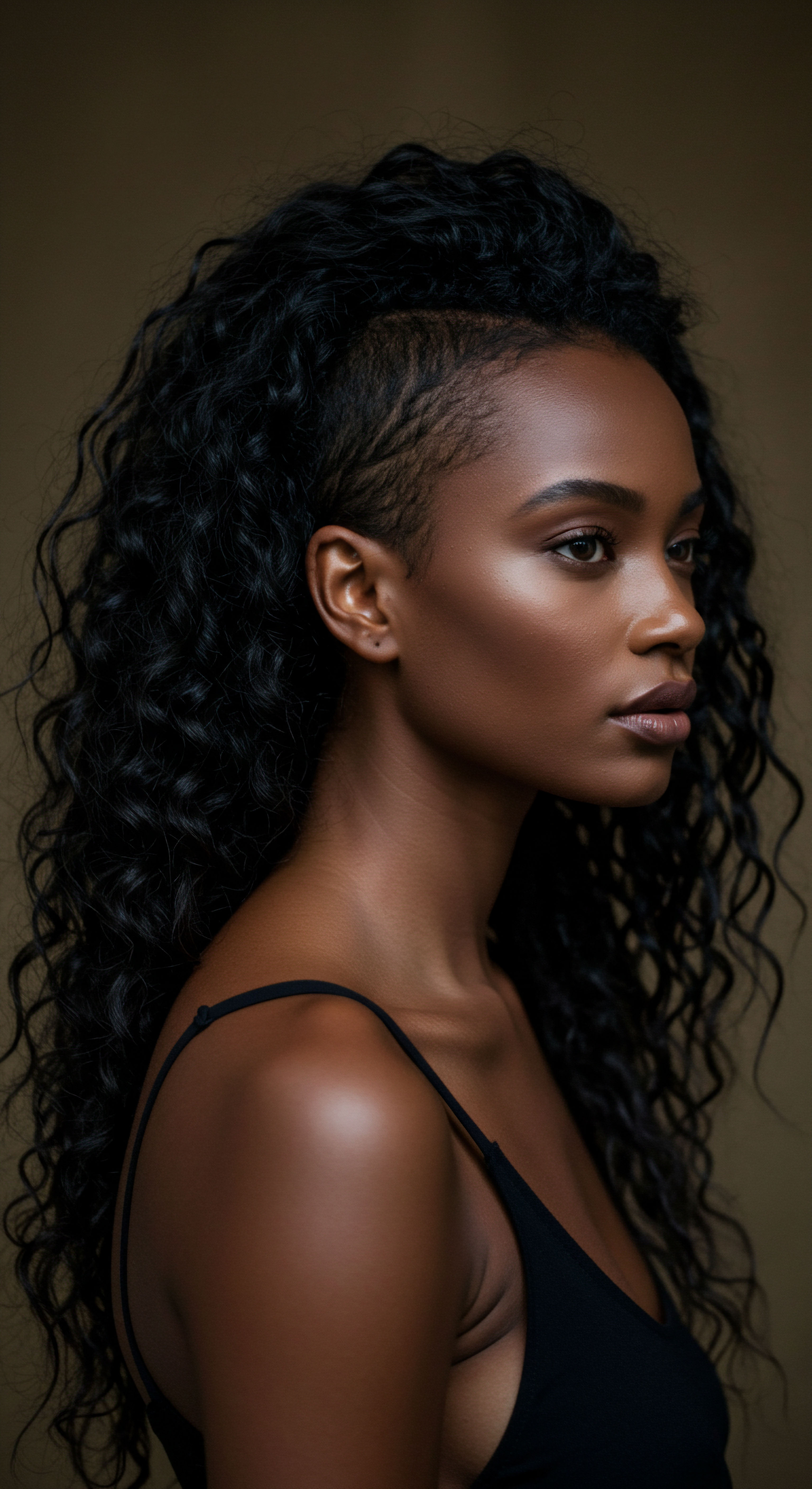
The Nighttime Sanctuary Essential Sleep Protection and Bonnet Wisdom
The nighttime routine, particularly the use of head coverings like bonnets, offers a compelling illustration of historical practices meeting contemporary needs. Historically, head coverings served multiple purposes, from modesty and religious observance to protection from the elements and maintaining intricate hairstyles. For textured hair, the silk or satin bonnet has become a ubiquitous symbol of nightly care, safeguarding delicate strands from friction and moisture loss during sleep.
This seemingly simple accessory plays a critical role in preserving the hair’s hydration, preventing tangles, and extending the life of styles. The science behind it is straightforward ❉ cotton pillowcases absorb moisture and create friction, leading to dryness and breakage. Satin or silk, conversely, allow hair to glide smoothly, retaining its natural oils and moisture. This practical application of material science, adopted widely today, directly echoes ancestral wisdom about protecting hair from environmental aggressors, albeit with a modern fabric.
The contemporary practice of using silk or satin bonnets for nighttime hair protection is a direct, scientifically validated continuation of historical traditions aimed at preserving hair health and style.
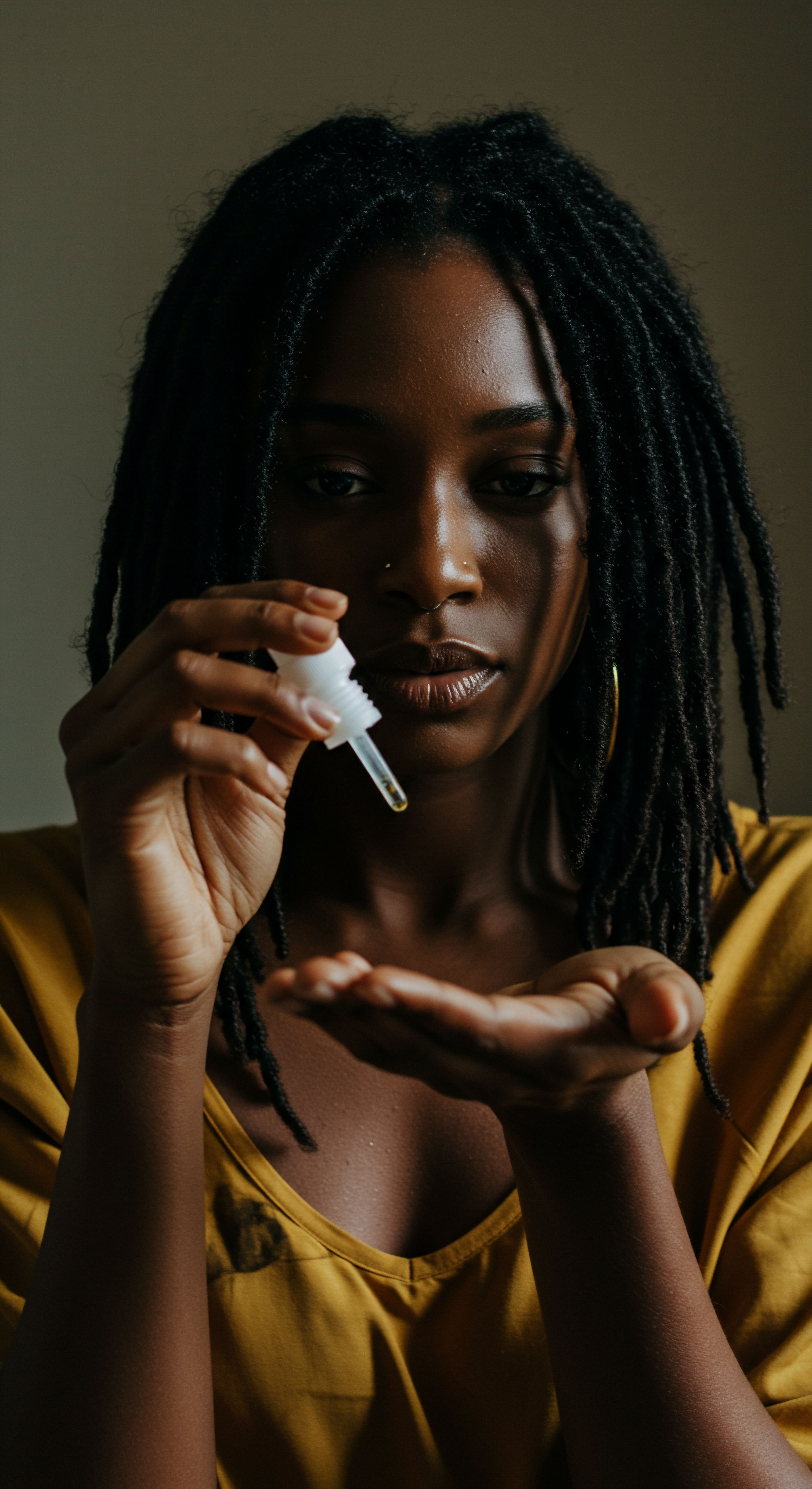
Ingredient Deep Dives for Textured Hair Needs
The conscious selection of ingredients in hair products marks a significant evolution in textured hair care, moving beyond mere fragrance or superficial shine. Historical remedies often relied on natural elements—plant oils, butters, and herbs—for their perceived benefits. Modern ingredient science has elucidated the precise mechanisms by which these, and newly synthesized compounds, interact with hair.
For textured hair, ingredients that provide deep moisture (like humectants such as glycerin or hyaluronic acid), strength (proteins like keratin or silk amino acids), and sealing properties (shea butter, jojoba oil) are paramount. The ability to read ingredient lists and discern what truly nourishes textured hair empowers consumers to make informed choices, moving away from products that may cause build-up or dryness. This critical approach to ingredients represents a sophisticated synthesis of traditional wisdom and contemporary scientific understanding.

How Does Hair Discrimination Impact Identity?
The societal perception and treatment of textured hair stand as a powerful nexus where historical bias profoundly impacts contemporary identity. For centuries, European beauty standards often relegated natural Black hair textures to a subordinate status, leading to practices of straightening and conforming. Despite strides towards acceptance, discrimination persists.
A striking example of this impact is evident in the workplace and educational settings. A 2019 study by Dove and the CROWN Coalition, the CROWN Research Study for Girls, revealed that Black girls are more likely to be sent home from school due to their hair than white girls. Furthermore, the study found that Black Women’s Hair is 2.5 Times More Likely to Be Perceived as Unprofessional Than White Women’s Hair. This data underscores a continuing systemic issue where natural textured hair is penalized, forcing individuals to choose between their authentic expression and professional or academic advancement.
Such discrimination, deeply rooted in historical biases against Black hair, directly undermines self-esteem and identity, highlighting the urgent need for protective legislation like the CROWN Act. The very act of wearing one’s natural hair becomes a statement of defiance and self-affirmation in the face of enduring prejudice.
Persistent hair discrimination, a remnant of historical biases, continues to negatively impact the self-perception and opportunities for individuals with textured hair in contemporary society.

Holistic Influences on Hair Health
Beyond topical applications, the holistic health of the individual profoundly influences textured hair vitality. This perspective, often central to traditional wellness systems, is gaining renewed recognition in contemporary hair care. Nutritional deficiencies, chronic stress, hormonal imbalances, and even sleep quality can manifest in the condition of one’s hair.
A balanced diet rich in vitamins, minerals, and healthy fats provides the building blocks for strong hair. Stress management techniques, adequate hydration, and consistent sleep patterns contribute to a healthier scalp and more resilient strands. This comprehensive view acknowledges that hair is not an isolated entity but an integral part of the body’s overall well-being, reflecting internal states. The emphasis on holistic care bridges ancient understandings of the body’s interconnectedness with modern scientific validation, promoting a deeper, more respectful relationship with one’s hair.

Reflection
To consider the journey of textured hair through history and into the present is to witness a profound dialogue between past and present, a conversation that shapes identity in myriad ways. It is a testament to resilience, a vibrant canvas for cultural expression, and a deeply personal statement of self. The legacy of care, the evolution of understanding, and the enduring power of personal choice converge, reminding us that our hair is more than simply what grows from our scalp; it is a living narrative, continually written with every conscious choice, every celebration of its innate splendor.

References
- Byrd, A. D. & Tharps, L. D. (2014). Hair Story ❉ Untangling the Roots of Black Hair in America. St. Martin’s Press.
- Holder, M. (2020). The Science of Black Hair ❉ A Comprehensive Guide to Textured Hair Care. Black Hair Media.
- Hunter, L. (2011). Buying Beauty ❉ The Ethnic Beauty Market in America. University of Texas Press.
- Mercer, K. (1994). Welcome to the Jungle ❉ New Positions in Black Cultural Studies. Routledge.
- Opoku-Mensah, E. (2019). The CROWN Research Study for Girls ❉ Hair Bias in Schools. Dove & CROWN Coalition.
- Powell, K. A. (2013). The History of Black Hair ❉ A Cultural Exploration. University Press of Florida.
- Sweet, E. (2019). The Hair Bible ❉ A Complete Guide to Hair Care. HarperCollins.
- Walls, K. (2015). Hair Care Chemistry for the Cosmetologist. Cengage Learning.